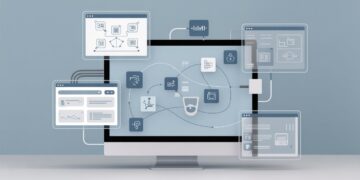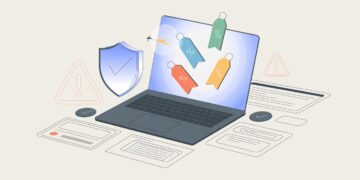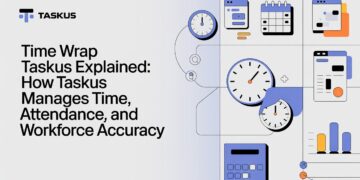Identity governance implementation facilitates user access management in a centralized repository by providing automated processes, visibility, and analytics. It also helps ensure that privileged accounts have the right business access level.
That includes ensuring that long-term users do not accumulate privileges. Which can open them to attack by phishing, spear phishing, and social engineering. It can also help meet regulatory compliance standards like GDPR and HIPAA or security standards like PCI DSS.
Create a Security Policy
The key to a strong identity governance program is a well-defined security policy. It should define which systems are included and how their access is governed. It also should set out the rules that help IT administrators make access decisions. It includes ensuring that the right people get to the suitable applications with the minimum privilege required at the right time. IT teams must balance productivity and security when granting user access to business applications.
IT teams should be able to provision users as quickly as possible. Still, they must also ensure adequate controls to prevent accidental or intentional data misuse. IT teams must monitor users and their activity across all platforms to detect anomalous behavior that could signal a breach.
It is also a good idea to create a single platform where IT can manage all user-privileged sessions. Screen recordings, and other audit trails. It gives the IT team a bird’s-eye view of all platforms to quickly spot potential issues.
Automate the Process
An identity governance framework is a powerful tool for establishing reliable and streamlined processes for granting access to applications and systems. It also helps IT admins meet internal and external compliance standards and data protection regulations.
Identity governance solutions help with many essential tasks, such as automating user provisioning and de-provisioning. Enabling self-service access requests, and implementing workflows for privileged access approvals. In addition, they can automatically alert IT admins to changes in users’ privilege levels to reduce risk and improve efficiency.
The best way to promote an identity governance program is as a business-related initiative that can benefit other departments and the organization. Positioning the program as a business driver rather than an IT-related project will make gaining the necessary resources and support to implement the solution easier. It assists you in avoiding the typical error of concentrating just on security, which other stakeholders may need to understand as an effort to impose access restrictions or lower worker output.
Involve Everyone
Having all stakeholders onboard is critical to establishing an identity governance framework that will last years. Users, department leaders, or external business partners must be willing to change their old working methods to adapt to the new framework.
Ensures Security and Compliance
The best identity governance solutions feature automation, enhanced user experiences, and spotlighting of insights to make it quicker for IT administrators to review and grant access privileges. It reduces the risk of human error and ensures that IT is adhering to internal and regulatory policies.
Also makes it easier for IT to manage user accounts and roles across all systems, applications, and data sources. It eliminates complex manual processes and provides a central dashboard to see the status of all systems at once. This centralized view helps IT teams address internal and statutory audits more easily by demonstrating how all critical assets are under their control. It can also help prevent insider threats. As a framework that tracks and monitors user activity can flag potential breaches or violations.
Create a Culture of Compliance
Controlling who has access to your IT systems and data can be challenging. It’s one thing doing it at home; it’s another coordinating the right level of access for thousands of employees across many IT applications and directories.
The answer lies in an identity governance framework that helps you balance productivity and security. It helps ensure that users have the access they need when they need it and that they don’t have more than is necessary to complete their job tasks. It also provides for regular reviews of access privileges to prevent unauthorized use of privileged accounts or the theft of sensitive information.
An identity governance framework that seamlessly integrates with your existing IT systems enables self-service requests for access review and approvals. It includes checkpoints to help identify and mitigate risks throughout the workflow. The time and effort required for access reviews can be significantly decreased. It can also scale effortlessly to accommodate changes in user populations, roles and responsibilities, and business requirements.
Integrate
An identity governance framework helps your team adhere to internal, statutory, and regulatory obligations without impeding productivity or compromising security. It also makes audits more straightforward and allows you to prove that critical systems are under granular control.
To get the most value out of an identity governance solution, it’s crucial to design it into your existing workflows and systems. Integrating identity into workflows streamlines user onboarding and de-provisioning, self-service access request processing, and other identity management functions. It eliminates siloed systems, improves accuracy, and reduces risk exposure.
Getting the most out of an identity governance framework means ensuring users have the minimum entitlements required to do their jobs, but no more. It ensures that sensitive information does not end up in the hands of a threat actor who could use it to commit a breach.
To achieve this, it’s essential to continually review your entitlement levels and make sure they converge to the “right” level. A well-designed identity governance framework offers standard workflows, analytics, and intelligence that help you do this. Read more exciting articles on Tech new master

















